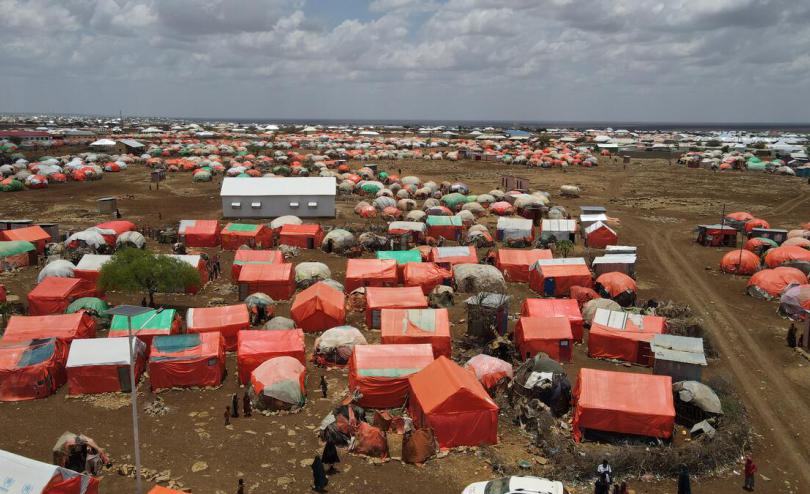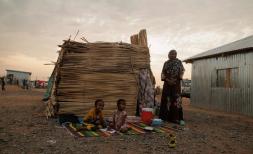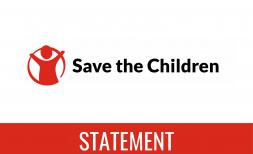Global donors urged to move quickly to prevent starvation and death for millions in Somalia, Ethiopia and Kenya

NAIROBI, 25 April 2022 – More than 50 non-government organisations and networks are calling on donor nations meeting this week for an urgent and substantial step-up in funding and leadership to respond to a humanitarian catastrophe unfolding in the drought-stricken Horn of Africa, warning that further delays will cost lives.
A High-Level Roundtable on the Horn of Africa Drought co-hosted by the European Union and the United Nations Office for the Coordination of Humanitarian Affairs (OCHA) is being held on Tuesday to discuss the severe drought that has been compounded by the COVID-19 pandemic, conflict, desert locusts, and now a surge in food and commodity prices due to the conflict in Ukraine.
Over 14 million people across Somalia, Ethiopia and Kenya - about half of them children - are on the verge of starvation with warnings that this number could rise to 20 million by the middle of 2022 if the rains continue to fail, prices rise further and without significant funds for those in crisis. In Somalia alone, over half a million people have already fled their homes in search of food and water since the start of 2022.
Even in the best-case scenario with above average rains, it would take months for people to recover, and as many as 11 million people would face severe food shortages in drought-affected areas through September 2022.
Save the Children’s Regional Spokesperson for East and Southern Africa, Shako Kijala, said:
“Children are always hit hardest by a food crisis – without enough to eat and the right nutritional balance, they are at high risk of malnutrition. Malnutrition leads to stunting, impairs mental and physical development in the long run, increases the risk of other illnesses, and ultimately causes death. For millions of children affected by the drought-driven hunger crisis in the Horn of Africa, time is running out.”
Nearly 5.7 million children in the Horn of Africa are threatened by acute malnutrition which leads to lifelong cognitive and physical impairments, increases the risk of other illnesses, and ultimately causes death. More than 1.7 million are at risk of severe acute malnutrition.
“Because of the drought, we are skipping meals. I have to ration supper, and divide meals so that some of my children who need additional food are able to eat more than others,” said Elizabeth Akaale, a mother of seven, living in Turkana, Kenya’s northwesternmost county.
Humanitarian and development workers with NGOs in Somalia, Ethiopia and Kenya, said the outpouring of support for people affected by the conflict in Ukraine demonstrated a strong sense of shared humanity. But they said they have yet to see the same level of urgency for millions of people like Elizabeth who bear the brunt of some of the world’s biggest shared challenges, including the climate crisis.
“Not getting much needed international attention and additional resources at a time of historic need in the Horn of Africa would result in the loss of thousands of lives that could have been saved by a timely and at-scale response,” said Heather Amstutz, Danish Refugee Council Regional Director for East Africa and the Great Lakes.
The lack of attention has raised fears of a repeat of acting too late in Somalia in 2011, when over a 260,000 people died as a result of drought and famine. In 2017, however, the Somali government and humanitarian community prevented the worst impacts of drought by acting swiftly on early warning signals, showing that a collective “no-regrets” approach to funding and programming can effectively avert famine.
“In Somalia, national and local actors are making every effort to intensify their response, but there is only so much they can do without the necessary funds. It is critical that funds are directly channeled through local actors who work on addressing the root causes of hunger through a community-driven, integrated humanitarian response,” says Issack Malim, Executive Director of the Nexus Platform in Somalia.
Failing to act quickly will also cost more to donors in the long run and risk reversing the last decade of investments in building resilience and ending drought emergencies in the region.
"In addition to a hunger crisis, we are seeing communities' capacity to cope and recover from shock at its breaking point. The clock is ticking, and we must act quickly and wisely by increasing investments to strengthen communities' resilience to future shocks," says Sean Granville-Ross, Mercy Corps Regional Director for Africa.
Humanitarian partners have requested more than $4.4 billion in funding to provide life-saving aid and protection to about 29.1 million people in Somalia, Ethiopia and Kenya in 2022. For Somalia, so far less than 5% ($64.7 million) of that has been secured.
In the past, the strong leadership and convening power of donor governments have proven very effective at mobilizing attention and resources in moments of humanitarian crisis. Today, that leadership is missing for the Horn of Africa.
Efforts by the EU and UN to convene the international community to discuss the crisis in the Horn of Africa and unlock additional, flexible funds is an urgent first step, but the NGOs expressed disappointment that this event was downgraded from a pledging conference to a high-level roundtable. Preventing further deterioration of the crisis will require donors to start acting with a sense of urgency and take decisive action now. The question that remains, as we watch global donors gather in Geneva this week, is will they rise to the occasion?
UPDATED on 25 April 2022 - This statement was endorsed by 53 local, national and international NGOs and NGO networks working in Somalia, Ethiopia and Kenya.
Notes to Editors:
- The World Food Programme has warned that the number of people facing hunger in the Horn of Africa due to the drought might rise to 20 million from 14 million by the end of the year.
- In Somalia, around 6 million people (38% of the population) are suffering from severe food insecurity (IPC3 or above), with 1.7 million of them in Emergency (IPC 4), and 81,000 people projected to face famine conditions (IPC 5) before June. There is a real risk of famine if humanitarian aid is not scaled up immediately.
- According to FSNWG’s Special Report on Drought, under an average to above-average rainfall scenario, Widespread Stressed (IPC Phase 2) and Crisis (IPC Phase 3) outcomes would be likely through September 2022, with between 7 to 11 million people still highly food insecure (IPC Phase 3+) in drought-affected areas.
- According to UNICEF nearly 5.7 million children are threatened by acute malnourishment in the Horn of Africa, with more than 1.7 million at risk of severe acute malnutrition.
- As trade routes from Ukraine and Russia are severely disrupted, staples such as wheat are becoming increasingly scarce and expensive. Save the Children said on Thursday that bread is a staple food in East Africa, with wheat and wheat products accounting for one third of the average cereal consumption in the region. The demand is mainly met by imports (84%), of which 90% of wheat imports come from Russia (72%) and Ukraine (18%)[i] and with prices rising in the past seven weeks. In Somalia’s Puntland state, the price of wheat flour has jumped from $26 to $32 per 50kg bag, and up to $36 in the towns of Garowe and Qardho[ii]. Because of the disruption in these imports, the cost of bread and other essential products is rapidly rising, disproportionately affecting the most vulnerable.
- For more information on the impact of drought and food crises on gender-based violence, check the Gender Based Violence AoR’s Brief Overview of Research, Evidence and Learning on the Links between Food Insecurity and Gender-Based Violence in Conflict Affected Settings.
- For more information on humanitarian funding gaps for Somalia, Ethiopia and Kenya, refer to the UN OCHA’s Financial Tracking Service
- The High-Level Roundtable on the Horn of Africa Drought is co-hosted by the European Union and the United Nations Office for the Coordination of Humanitarian Affairs (OCHA). It will take place in Geneva on Tuesday 26 April 2022 from 4:00 pm – 6:30 pm (EAT) and will be held in a hybrid format (online and in-person).




